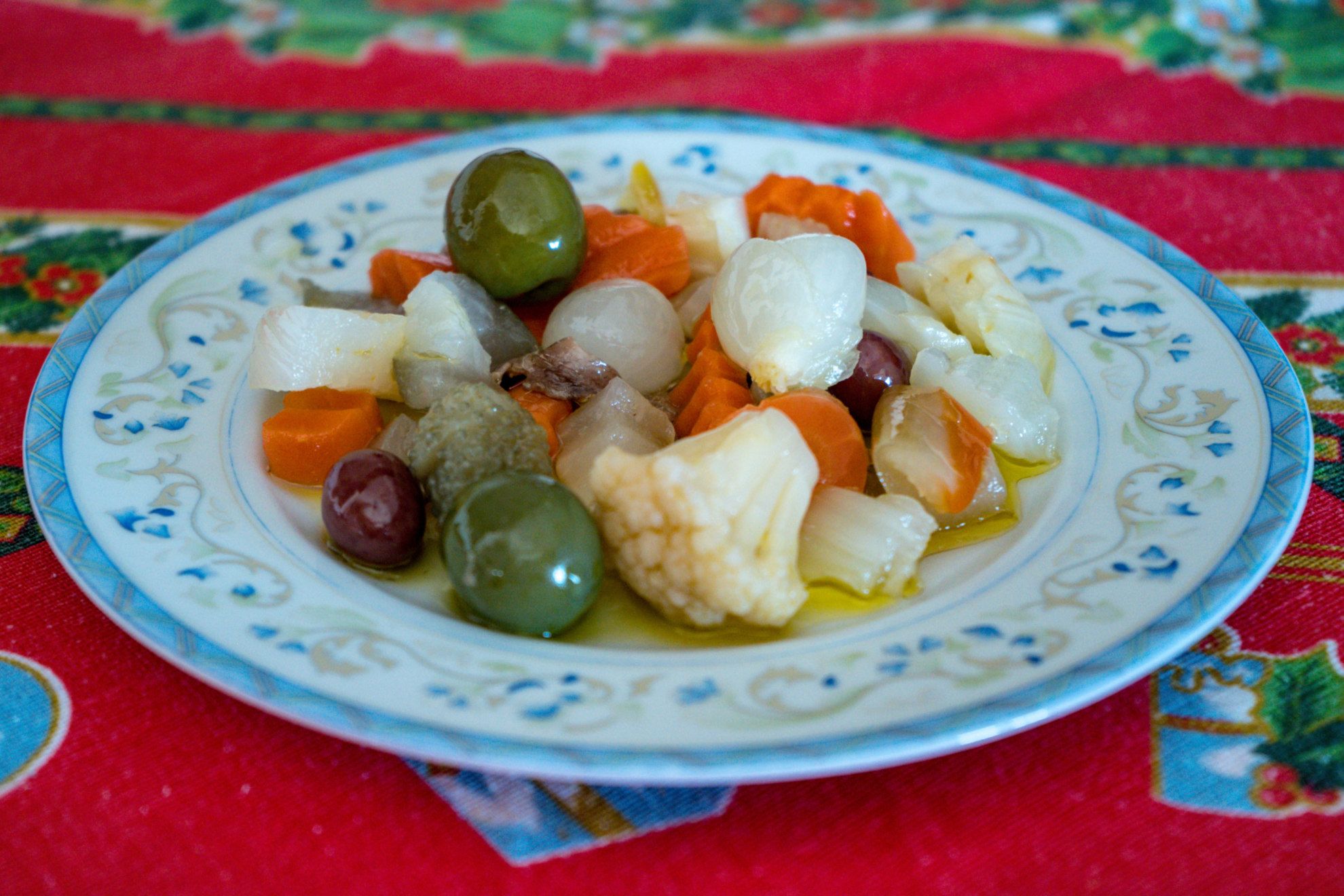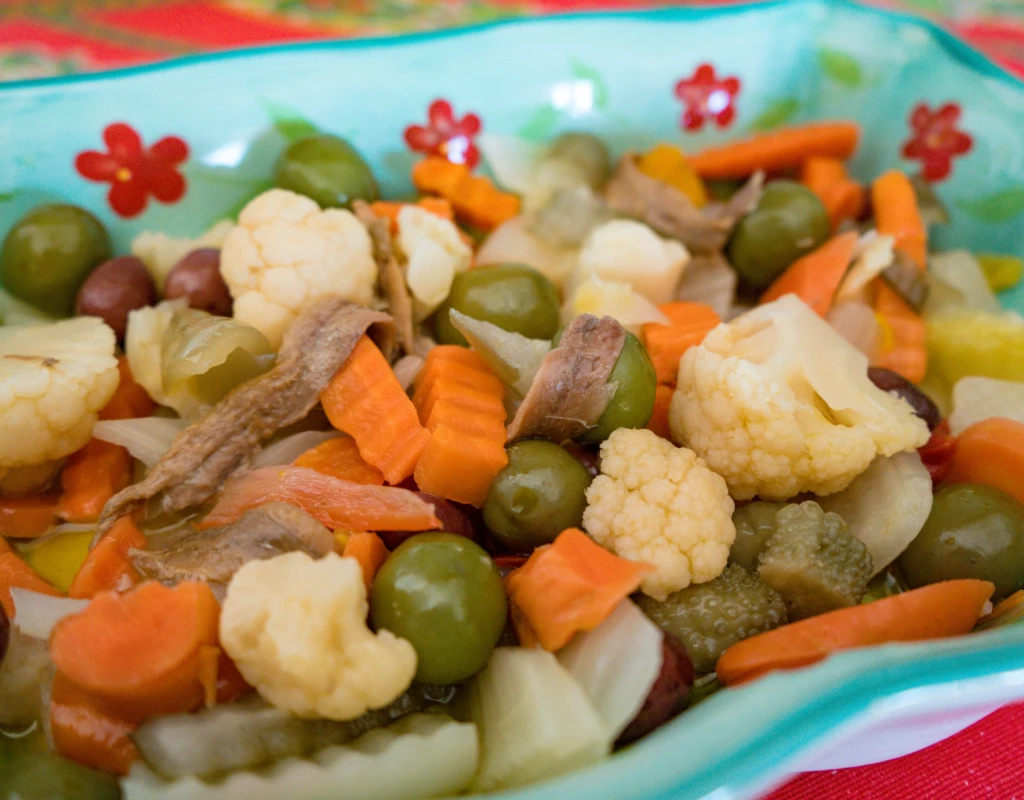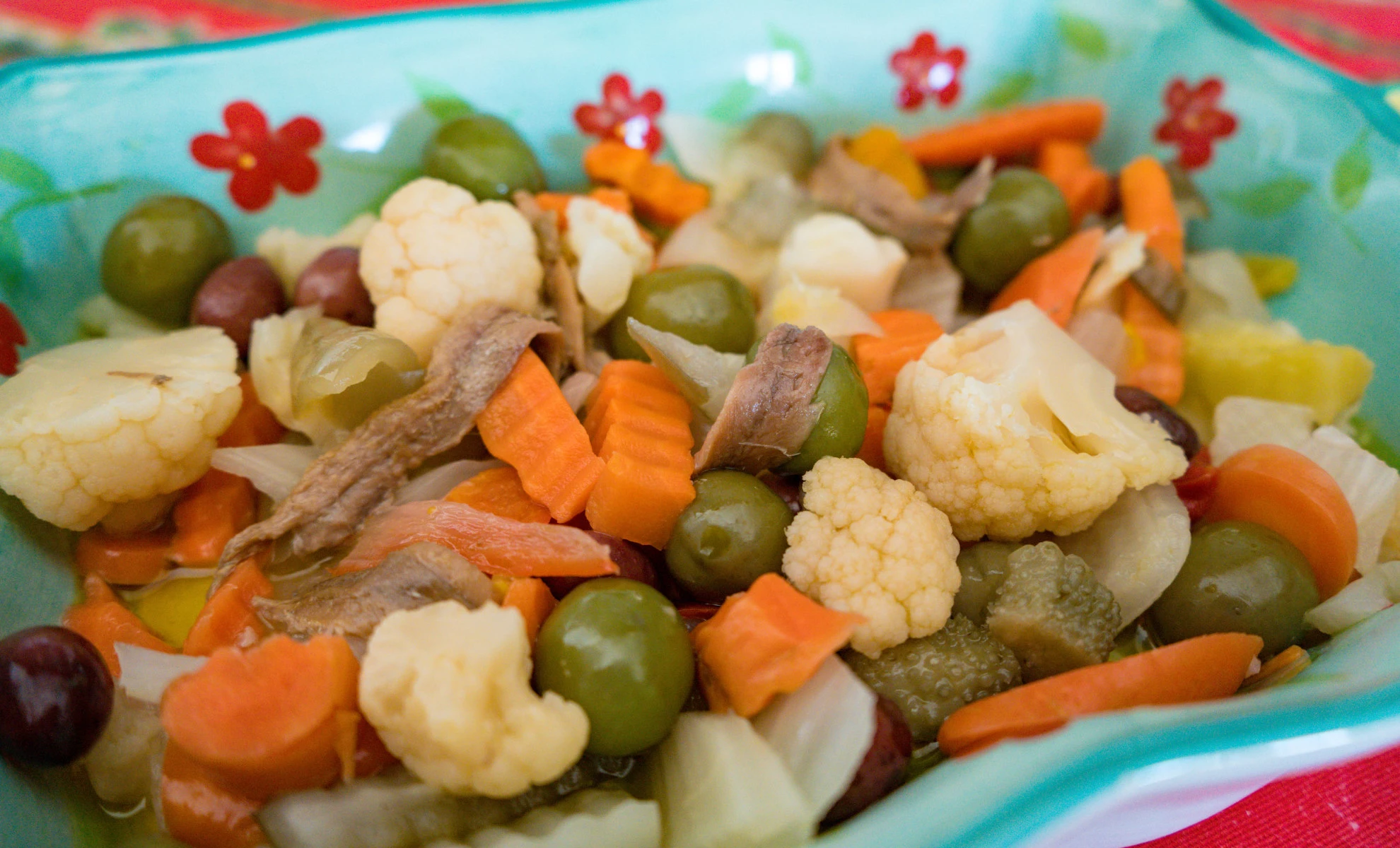Nothing is more subject to change than the “enhanced salad”. In many parts of Italy, the name of this recipe will say little or nothing. But in Campania, and especially in Naples, it is automatically associated with Christmas Eve.
But why is it changing? For the variety that characterizes this recipe. On Christmas Eve, the scent of vegetables, anchovies and vinegar spreads alongside the usual fish-based dishes that adorn our tables. Cauliflower, green and black olives, papaccelle (spicy peppers), capers and various foods in oil complete the dish. It is one of the tastiest side dishes of traditional Neapolitan cuisine.
A potpourri of ingredients that are “enriched” from time to time according to the left-overs of the holidays. This explains the name of the dish: if on the evening of Christmas Eve the ingredients are the basic ones listed above, the dish is slowly enriched with further components. Until lunch on the first day of the new year when, perhaps, we can even find those pieces of fried capitone (kind of large eel) or salted codfish that we did not eat in the previous days.
“It is the traditional Neapolitan Christmas salad, which was once useful to enrich the humble menu of meat on Christmas Eve; today it is something more but a pleasant more”From “Si cucine cumme vogli'i'...” by Isabella Quarantotti De Filippo
Born as a sort of “Christmas caponata”, to use the definition of Ippolito Cavalcanti in his treatise on “Theoretical-practical cuisine” of the nineteenth century, this recipe is therefore the result of popular imagination, combined with a dose of parsimony. The secret of the long conservation of the enhanced salad is precisely the abundant use of vinegar, which ensures that the ingredients are not spoiled after a few days.
Ph. Enrico Nocera

Also for this reason the enhanced salad is inextricably linked to the peasant tradition of Campania. This is a conception of life where the products of the land have an almost “sacred” status, making the sin of wasting them almost mortal. There is also an even more “practical” reason why the enriched salad would become an indispensable side dish for holidays.
A reason that today, in a social context characterized by economic well-being, might seem surprising. In fact, the peasants, especially in the nineteenth and early twentieth centuries, had no money to waste on holidays. Christmas was not celebrated with rich tables and boiling pots, but with the products of the land.
“...you can continue to add to the remains of the food now other cauliflowers, now other pickles. The hash on the bottom of the plate forms a tasty base for the new ingredients and the vinegar ensures that the salad does not go bad”From “Si cucine cumme vogli'i'...” by Isabella Quarantotti De Filippo
Therefore, perhaps, we call it “enhanced salad”: and this is the second theory on the origin of the name. Because it was used, in fact, to “reinforce” the dinners and lunches of the numerous peasant families who, otherwise, would have spent Christmas with an empty stomach.

